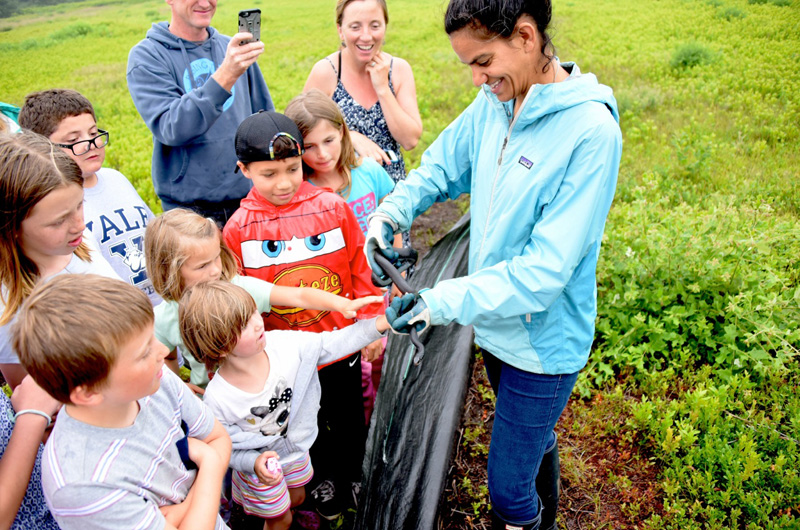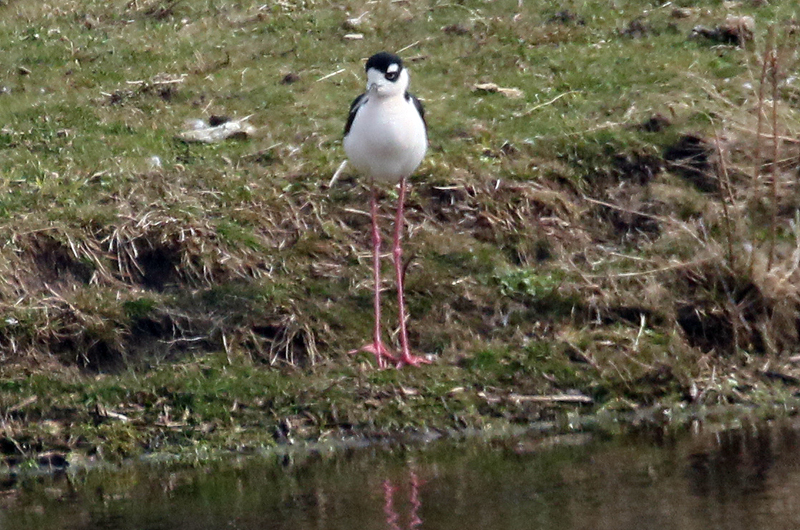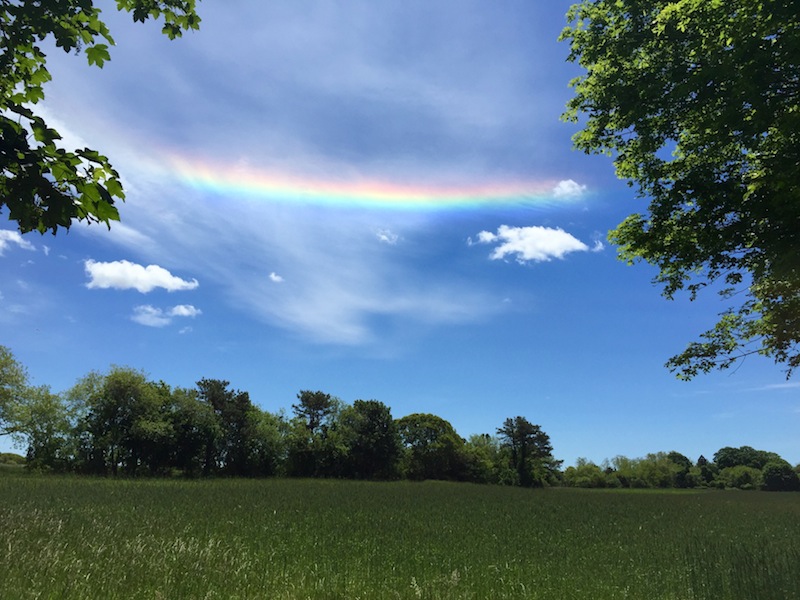The Island paused amid the bustle of an August day, with strangers gathering to gaze skyward at a partial solar eclipse. Back on planet Earth, amateur botanists found something to marvel at right underfoot, with the discovery of a rare plant growing in obscurity along the shores of Sengekontacket Pond.
While fighting tick-borne illness and the plight of right whales dominated headlines, 2017 was also filled with quieter environmental stories — from rare plants to visiting birds and unusual animals.

On August 21, Islanders donned protective glasses to take part in a national event: a solar eclipse that left some parts of the country in total darkness as the moon obscured the sun. The Vineyard was far from the path of totality, so the solar show was less spectacular but still striking. For about two and a half hours people were able to watch the moon move across the sun, which was 65 per cent obscured at the peak of the eclipse.
Protective glasses were a hot commodity, and people gathered on beaches, in driveways and at outdoor cafes to share their glasses and witness the solar show. Some gazed upward through makeshift sunspotters made of cereal boxes. Island libraries also were gathering places, with live-streams of the total eclipse and even high-tech solar telescopes.
The obscured sun cast crescent moon shadows through tree leaves, and the midday sun dimmed. By 4 p.m. it was a regular summer day again on the Vineyard.
June brought a more unexpected event in the sky: a peculiar high-altitude rainbow known as a circumhorizontal arc, that ran parallel to the horizon. The rare rainbow was seen over Lambert’s Cove and above farms in West Tisbury. It was caused by sunlight passing through high-altitude ice crystals.
An unassuming plant named Brown sedge (Carex disticha) caused a stir when it was discovered growing along the shore of Sengekontacket Pond in Edgartown. It marked the first time the plant had been found in the United States. Gregory Palermo and Margaret Curtin, amateur botanists and Polly Hill Arboretum volunteers, first found the brown sedge in June 2016. The news became widespread when a report on the discovery was published in a scientific journal in August.
The sedge likely arrived on the Vineyard long ago aboard a cargo ship from Europe to North America, a stowaway in the straw used as packing material and animal bedding. The plant is native to Northern and Western Europe.
“This tells me that if people look, they’re going to find interesting plants right under their noses,” Mr. Palermo said.

From beaches to the skies, the natural world informed or delighted. Biologists kept track of the declining number of black racer snakes on the Island. There was bad news for Vineyard northern long-eared bats, which had appeared to be immune from the white-nose syndrome that has decimated bats around New England. In March a bat on the Island tested positive for the illness.
In March a dead fisher — a large mammal in the weasel family — washed up on the north shore, the first documented sighting of the species on the Island. Biologists agreed that the animal likely had become caught in a current.
An overflow crowd came out to hear shark biologist Greg Skomal talk about white shark research around the Cape and Islands. A cold-stunned Kemp’s ridley turtle that washed up at Cape Pogue in December was given a second chance with the help of Island naturalist Gus Ben David and a team of volunteers and biologists that rescue hundreds of the endangered turtles every year.
As always, osprey arrived for the summer, with 89 breeding pairs fledging 117 chicks. Other bird sightings were unusual, like a common raven seen in September and an unexpected white pelican that mingled with the usual gulls and cormorants in August at Black Point Pond. An errant black-necked stilt was found in April, far from its usual habitat in the southwestern United States. A juvenile glossy ibis, another species more common in the south, was seen in a salt marsh at Cape Pogue in August.
As the year came to an end a young peregrine falcon hunkered down on the Big Bridge at State Beach, likely drawn to the pigeons that roost under the bridge. The bird was found by the scores of birders who ventured out to look for one of the first snowy owls of the winter.









Comments
Comment policy »